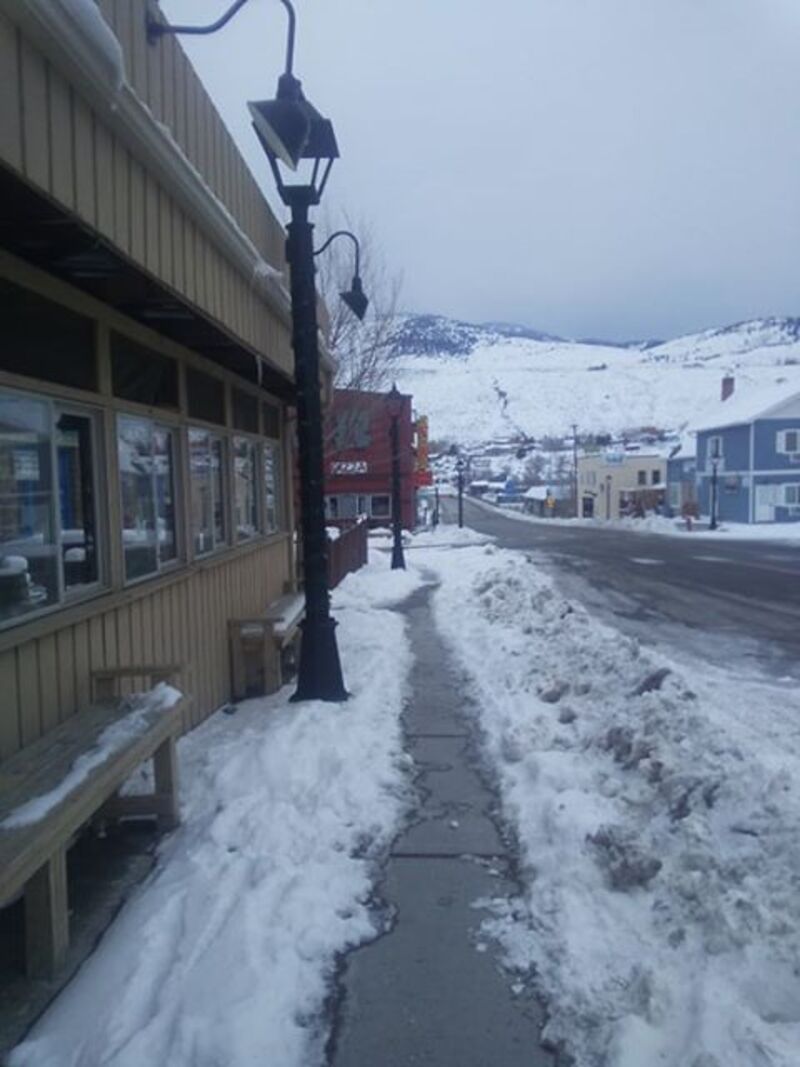
Background
I recently received a question about whether a local city is in compliance with the Americans with Disabilities Act by having an ordinance requiring snow and ice to be removed from sidewalks bordering residential properties within 24 hours and from sidewalks bordering commercial properties within 12 hours after snowfall that deposits one or more inches of snow stops. The ordinance did not specify how this requirement would be enforced. Having just spent the better part of a Saturday morning shoveling snow from five city curb ramps to make the corners and median closest to my house accessible, I can relate very personally to this issue.
The problem exists everywhere that snow falls. While city ordinances often assign the responsibility (i.e., civic duty) to keep sidewalks and pedestrian ramps clear of snow and ice, without appropriate and timely enforcement, the ordinances do not necessarily ensure that the sidewalks remain accessible or are promptly returned to accessibility, as required by title II of the Americans with Disabilities Act (see §§35.149 and 35.133 below).
§ 35.149 Discrimination prohibited.
Except as otherwise provided in § 35.150, no qualified individual with a disability shall, because a public entity's facilities are inaccessible to or unusable by individuals with disabilities, be excluded from participation in, or be denied the benefits of the services, programs, or activities of a public entity, or be subjected to discrimination by any public entity.
§ 35.133 Maintenance of accessible features
(a) A public entity shall maintain in operable working condition those features of facilities and equipment that are required to be readily accessible to and usable by persons with disabilities by the Act or this part.
(b) This section does not prohibit isolated or temporary interruptions in service or access due to maintenance or repairs.
Title II: Ensure Programmatic Access
First, city sidewalks provide a service, program, or activity (i.e., pedestrian transportation) to the public, leaving little wiggle room with regard to whether sidewalks that are inaccessible for more than “isolated or temporary interruptions in service or access due to maintenance…” amount to an exclusion from participation in, or denial of “the benefits of the services, programs, or activities of a public entity.” Second, the fact that public sidewalks are facilities, that provide a title II program, means that a city cannot contract or outsource responsibility for ADA compliance (see, “through contractual or other arrangements…” § 35.130) to private citizens or business owners. That is, a public entity, simply by saying that adjacent property owners are responsible for maintaining public sidewalk accessibility, without enforcing that responsibility, cannot support a claim that it has either fulfilled the title II regulatory requirement or otherwise defer its legal obligation.
I cannot give legal advice – I’m not an attorney – but in my experience and reading of case law, any citizen who has standing (i.e., a qualified individual with a disability) has a rather solid case when complaining that public sidewalks and curb ramps have not been cleared of snow and ice within a reasonable amount of time. And, yes, that citizen may actually make a federal case of the complaint (see § 35.170).
What’s a City to Do?
In my humble opinion, cities ought to have policies (practices, procedures, ordinances, etc.) to take direct responsibility for removing snow from sidewalks (when private citizens and businesses fail to do so). Obviously, that will have a cost and if a public entity does not have a valid way to compel violators to reimburse those costs, then the entity will need to absorb that cost. Is there a process by which a city can incur the cost and then administer a fine and/or demand restitution? Is the cost to a public entity of removing snow and ice less than the cost of defending a federal civil rights lawsuit? On the one hand, public entities should recognize that this is a risk management concern. On the other hand, they should realize that this is a civil rights concern and that providing inclusive programs for people of all abilities is the right thing to do.
A public entity must have a proactive means of ensuring that its pedestrian facilities are accessible to all. Reacting to a complaint – unless that can and will be done very quickly and effectively – means that a constituents may exercise their rights to file complaints with their State’s division of civil rights, or the U.S. Department of Justice, or even to file a lawsuit in federal court.
This Blog Post was written by Geoff Ames, Executive Consultant with Meeting the Challenge, parent organization of the Rocky Mountain ADA Center.